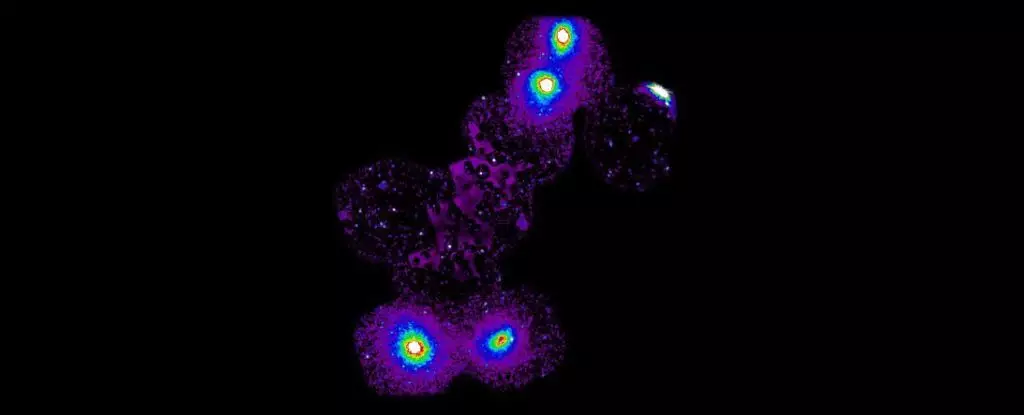In a groundbreaking development in astrophysics, the enigma surrounding the missing matter in the universe appears to have taken a significant leap toward resolution. Recent X-ray observations have uncovered an extensive filament of hot gas, vast in scope and magnitude, emerging within the immense Shapley Supercluster—home to an astounding collection of 8,000 galaxies. This filament, measuring a staggering 23 million light-years, is more than just a spectacular sight. It represents a critical piece of the puzzle that explains the discrepancy between the known and expected matter in our universe.
Astrophysicist Konstantinos Migkas from Leiden Observatory emphasizes the magnitude of this discovery by noting how closely their findings align with existing models of cosmic structure. This alignment is not only a validation of simulations carried out by researchers but also a significant advancement in understanding our universe. The tantalizing question, however, remains: what exactly is this material, and where does it fit into our broader understanding of cosmic composition?
The Dark Matter Dilemma
Traditionally, matter in the universe has been classified into two categories: ‘normal matter’, composed of protons, neutrons, and electrons, accounting for a mere 15% of all matter, and the elusive ‘dark matter’. Even though scientists have reliably estimated the amount of normal matter present just after the Big Bang through cosmic relics, such as the Cosmic Microwave Background radiation, a significant issue arises when attempting to quantify the existing matter in the universe today. A striking deficit exists, where observed matter—including stars, galaxies, and black holes—falls short of predictions by nearly half.
This discrepancy evokes a fundamental question: if matter cannot be destroyed, where is it? The prevailing hypothesis suggests much of this missing material has been dispersed throughout intergalactic space, forming a tenuous network that eludes direct observation. Recent findings, notably the newly discovered filament, strengthen this assertion, guiding scientists toward a clearer understanding of cosmic matter distribution.
Mapping the Cosmic Web with Advanced Astronomy
To unravel such a profound mystery, researchers employed advanced observational techniques using two distinct X-ray telescopes: the now-retired Suzaku and the still-functional XMM-Newton. Each equipped with unique capabilities, these instruments allowed scientists to paint a clearer picture of the filament’s structure and composition. The Suzaku telescope excels at detecting faint X-ray radiation, effectively capturing the diffuse glow emanating from the filament, while XMM-Newton can focus on brighter, point-like sources of X-rays.
By merging observations from both telescopes, researchers managed to filter out noise from celestial objects like black holes, isolating the filament’s faint emissions. This collaborative approach culminated in the detailed mapping of a massive structure that adheres to theoretical predictions of filament formation, further solidifying existing cosmological models.
The Significance of the Discovery
The identification of this celestial filament is not merely an academic triumph; it brings practical implications for our understanding of the universe’s fabric. Spanning clusters A3528S/N and A3530/32, the filament contains sufficient matter to fill ten Milky Way galaxies, existing at temperatures exceeding 10 million degrees Celsius. This observation doesn’t just support theoretical predictions; it lays the groundwork to scrutinize the dynamics of how galaxies traverse these cosmic highways.
Norbert Schartel from the European Space Agency hails this joint effort as a pioneering model for future astronomical surveys. The ability to detect emissions from these elusive cosmic networks may transform how researchers perceive and study the vast expanses of intergalactic space. Not only does this validate current cosmological models, but it also opens the door for future investigations into the fundamental nature of dark matter and universe composition, inviting a new era of astrophysical research.
Astronomical discoveries such as this remind us of the ever-challenging, dynamic nature of our universe. As we uncover these cosmic intricacies, we are not merely observers; we are participants in a grand dialogue about the origins, structure, and fate of the cosmos.

